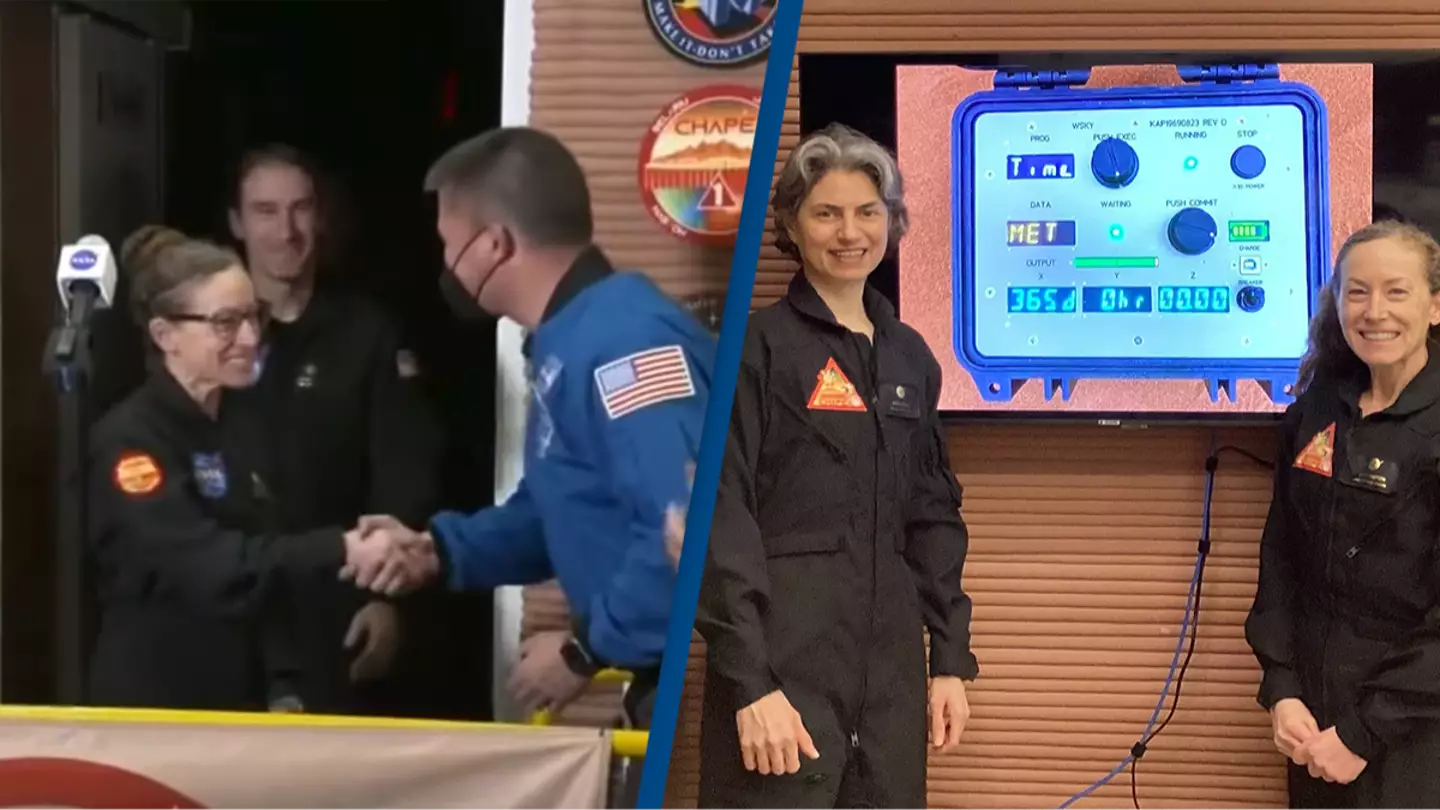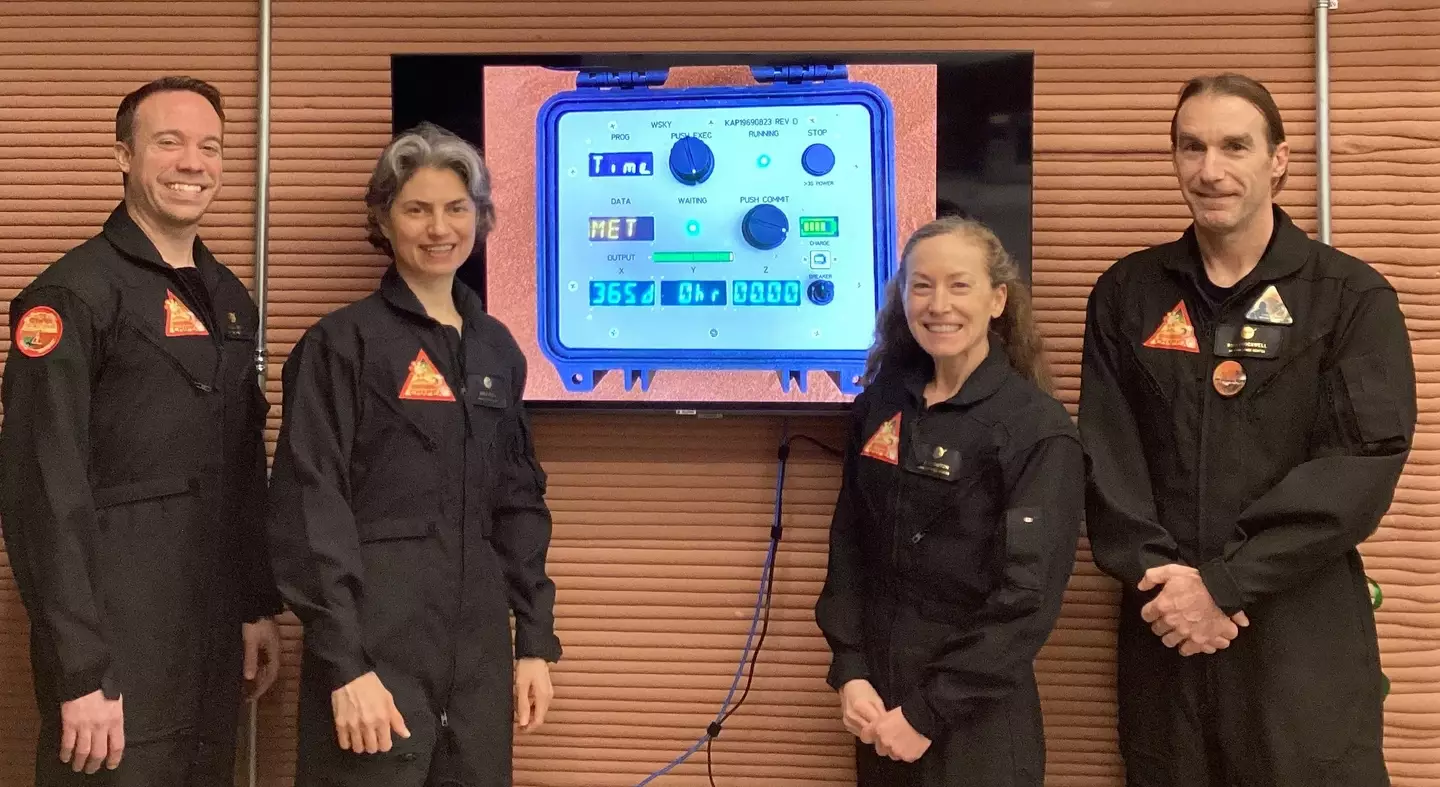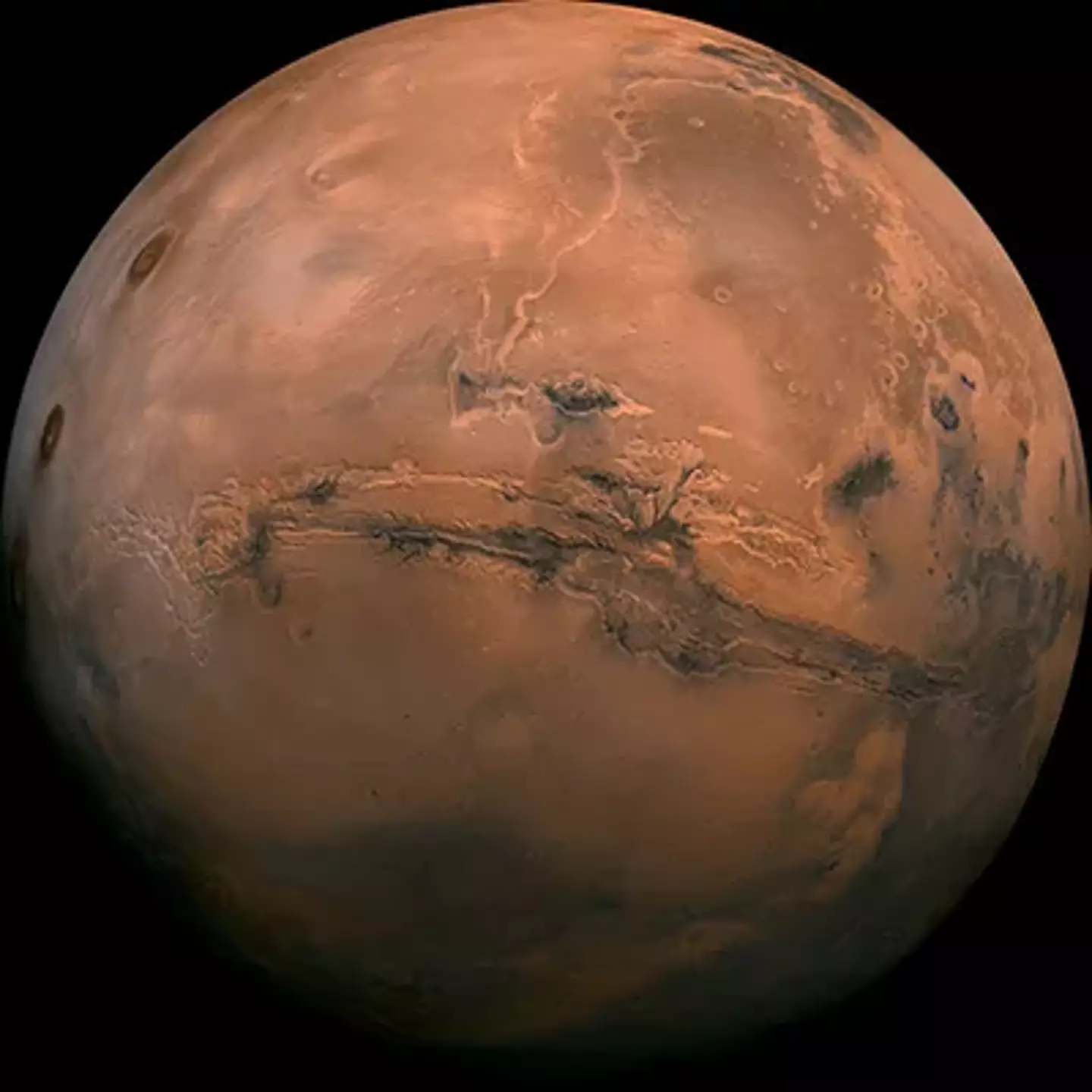
NASA volunteers have finally emerge from a year-long Mars habitat mission.
We all remember the Covid-19 pandemic and how we were all locked away in what felt like solitary confinement.
Fortunately for us, we were able to spend time with our families, but if asked to do it all over again, you'd probably tell them to stick it where the sun doesn't shine.
Incredibly, four astronauts did so voluntarily in order to see what it would be like to undertake a mission to Mars.
Advert
Kelly Haston, Anca Selariu, Ross Brockwell, and Nathan Jones spent 378 days locked away in a '3D printed habitat' together at NASA’s Johnson Space Center in Houston at 5pm (EDT).
Inside the 1700-square-foot accommodation, which had around nine rooms - including a communal area, a shared bathroom and toilet, as well as and private bedrooms.
The simulation was the first mission of its kind and was titled 'Crew Health and Performance Exploration Analog'.
NASA said in a statement: "The first Crew Health and Performance Exploration Analog (CHAPEA) mission began in the 3D printed habitat on June 25, 2023, with crew members Kelly Haston, Anca Selariu, Ross Brockwell, and Nathan Jones.

"For more than a year, the crew simulated Mars mission operations, including 'Marswalks', grew and harvested several vegetables to supplement their shelf-stable food, maintained their equipment and habitat, and operated under additional stressors a Mars crew will experience, including communication delays with Earth, resource limitations, and isolation.
"In addition to the CHAPEA crew, participants include: Steve Koerner, deputy director, NASA Johnson, Kjell Lindgren, NASA astronaut and deputy director, Flight Operations, Grace Douglas, principal investigator, CHAPEA, Judy Hayes, chief science officer, Human Health and Performance Directorate, Julie Kramer White, director of engineering."
The reason for the crew's simulated Mars experience was in order for the space organization to understand whether the crew could exist together in an environment that is completely different to home.
However, before humans ever set foot on the Red Planet, there are a few things scientists need to figure out - namely, how it would affect the astronaut's health.

A recent study by University College London (UCL) scientists showed that microgravity and galactic radiation from space impact certain body parts.
In particular, parts of the kidney showed signs of shrinkage after less than a month in space.
One of the study's authors, Dr Keith Siew, told The Independent that in 'relatively short space missions', astronauts were found to have an increased number of health issues, like kidney stones.
"What we don't know is why these issues occur, nor what is going to happen to astronauts on longer flights such as the proposed mission to Mars." he said.
"If we don't develop new ways to protect the kidneys, I'd say that while an astronaut could make it to Mars they might need dialysis on the way back."
Topics: NASA, Mars, Space, Science, Technology